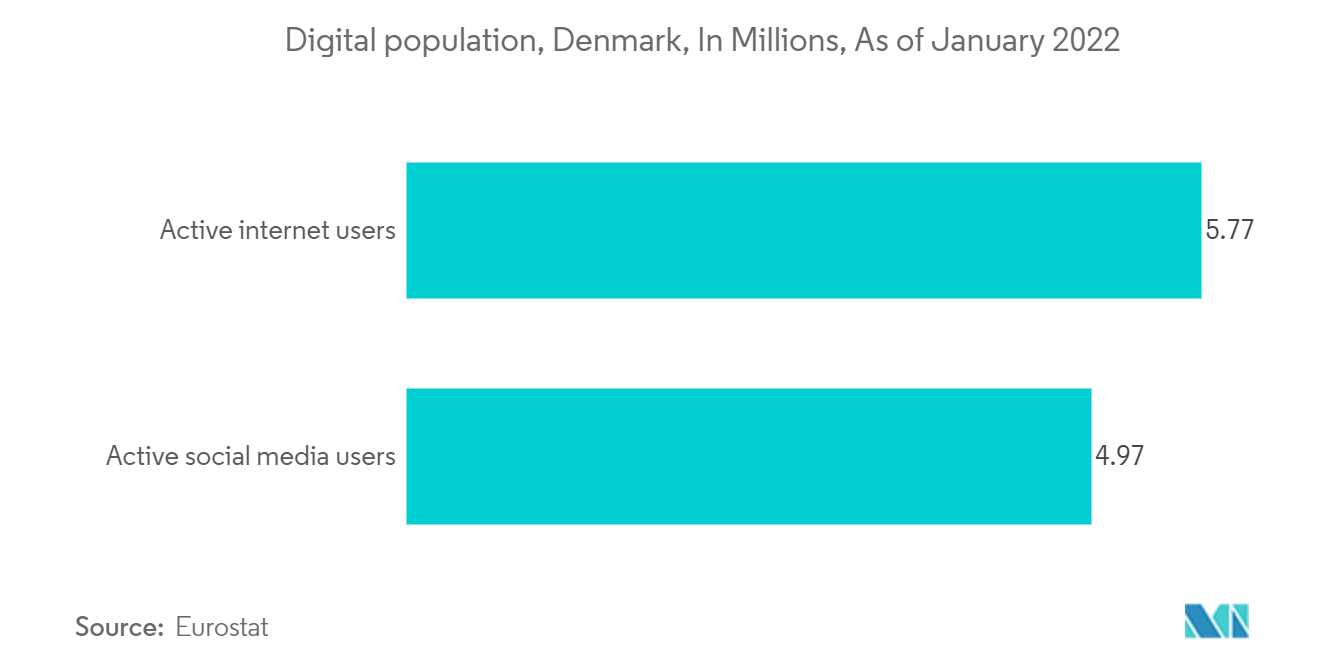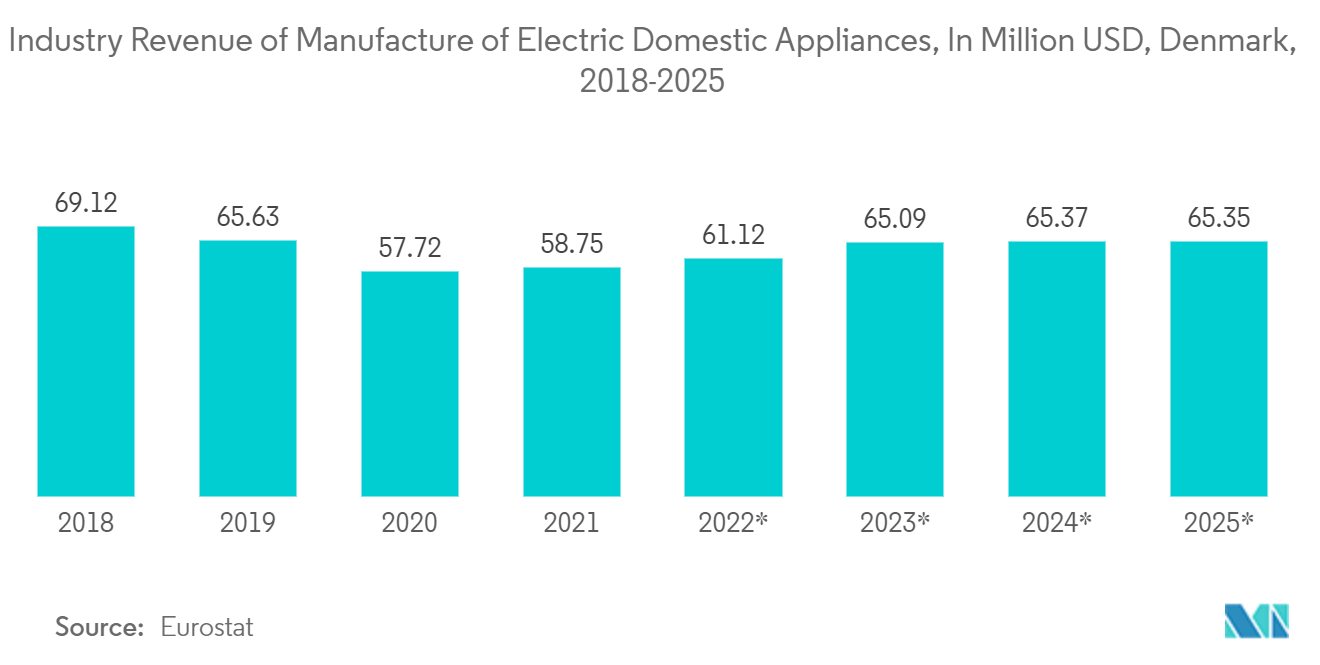Market Trends of Denmark Cybersecurity Industry
This section covers the major market trends shaping the Denmark Cybersecurity Market according to our research experts:
Digitalization Drives the Market Growth
- According to the Centre for Cybersecurity's assessment for 2021, the COVID-19 pandemic has resulted in a dramatic growth in the digitization of many firms' workplaces. This has also produced a number of issues, as many employees do not perceive their workplace at home to be as exposed. However, it may be considerably more vulnerable; consequently, it is critical to safeguard remote access.
- Additionally, the arrival of 5G in Denmark would result in more new attack surfaces for hackers. Although 5G promises improved mobile security, its complexity results in new interfaces in the telecommunications infrastructure. A decentralized network structure, edge, cloud computing, and software that replaces physical hardware are all required for 5 G's high performance, but they also expand the attack surface.
- The many sensors, products, and appliances anticipated to be connected to the internet (i.e., the internet of things, IoT) also open up more and newer surfaces, raising security concerns.
- The spirit of Industry 4.0 is deeply rooted in the Industrial Internet of Things in Denmark. This technology promises to connect machines, products, processes, and systems in real time. More sensors and computing power will be incorporated into devices. This aids in decentralizing analytics and decision-making, allowing for real-time reactions. On the other hand, open and integrated networks are vulnerable to malicious attacks. As a result, to protect industrial systems and manufacturing lines, firms will need to prioritize cyber security.
- The launch of Amazon in Denmark will gradually enhance B2C e-commerce in the following years. Further, there are multiple guides aimed at helping independent sellers break into the online market. There are both B2B and B2C service providers with paid services assisting private companies in their pursuit of setting up online and expanding their business in e-commerce.
- In 2021, the European Commission announced the strategy for the digital transformation of Europe by 2030. It focuses on making at least 80% of adults have digital skills, all EU households have gigabit connectivity, all populated areas are covered by 5G, and more than 90% of SMEs should reach at least a basic level of digital intensity. Such initiatives will likely drive Europe's customer data platform market's growth.
- In October 2021, Telenor chose NEC Corporation and Cisco to develop 5G xHaul transport networks in Norway and Denmark. NEC and Cisco signed a Global System Integrator Agreement (GSIA) in April 2021 to expand their collaboration to accelerate the global implementation of breakthrough 5G IP transport network technologies. This project is a flagship endeavor in which the two firms leverage the GSIA and combine to provide customers with cutting-edge networks.

Manufacturing is One of the Factor for Market Growth
- As the manufacturing sector progresses toward a digital transformation, it has become vulnerable to cyber-attacks with the advent of Industry 4.0. Thus, the industry needs companies to realign their security systems.
- The benefits of advanced online systems make manufacturing organizations more vulnerable to cyber dangers.
- Every sector in the manufacturing industry, including automotive, logistics, various engineering disciplines, power systems, the consumer goods industry, and chemicals, has adopted digital technologies to increase overall operational efficiency and reduce production costs. M2M communication and networking have been on the rise due to the industries working toward data collection and are using it for analytics to avoid downtime and keep the manufacturing industry operational round the clock.
- The Danish government unveiled a new digital cyber and information security policy that will be implemented from 2022 to 2024. The new plan focuses on public sector authorities, corporations, and the general public to ensure a stronger, more secure digital Denmark that is better prepared for cyber threats.
- The strategic objectives include: Robust protection of functions essential for society, increased level of competence and management anchoring, strengthening of public/private sector companies, and active participation in the international fight against the cyber threat.


